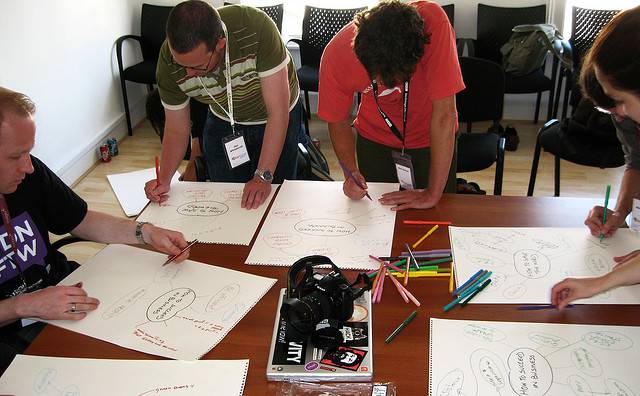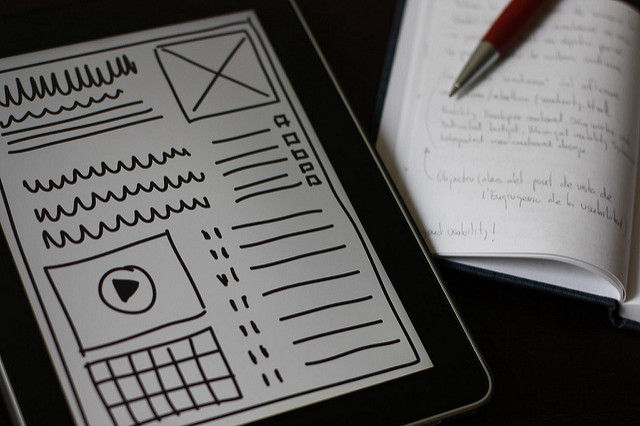We know that UX is important. Google knows that UX is important. But when it comes to selling in UX work it can often feel like nobody else knows that it’s important. Clients and colleagues often seem completely intractable on ideas when we present them. So how can we better serve those customers and get them to take on board what we do as valuable? We’ve got 10 tips that may well improve the success of selling your UX work:
Table of contents
- 1. It’s Not About You and It’s Not About Users
- 2. Examine Your Approach
- 3. Use the Environment to Pre-Sell Your Work
- 4. Leverage Other Clients to Help You Sell
- 5. Have a Clear But Flexible Process
- 6. Tailor Documents and Deliverables
- 7. You Know What They Say About Assumption…
- 8. Use a Little Fear
- 9. Consult More, Speak Less
- 10. Use Data To Back Up Your Points Wherever Possible
- Summary
1. It’s Not About You and It’s Not About Users
Your work is all about your users when you’re doing it but it’s not about users when you’re selling it. When you sell to someone, you need to address their needs. You have to take the time to walk a mile in their shoes and see through their eyes. The objective is to make your work relevant to reduce pain that they’re experiencing or to help them boost their own profile. They may come to care about you and the users as part of the process but it’s not what’s going to get them to buy in first time round.
2. Examine Your Approach
Facts and figures are a great way to support a business case but an endless procession of facts and figures devoid of personality can turn people off. You need to inject some wit and charm into the process. The more likeable that you are, the easier it will be to win your audience over. Your passion can become infectious if you let it be. It’s hard to sell the sizzle without a little personal sizzle.

Author/Copyright holder: premasagar. Copyright terms and licence: CC BY-NC 2.0
3. Use the Environment to Pre-Sell Your Work
Create a visible and easily accessible space that you can pin relevant and useful UX work to. Break down what happened, why it happened and what resulted from your efforts. When your customers can see what you do, they can find it easier to ask about what you do. Not all sales pitches are conducted in 20 minutes in high pressure situations, sometimes a gradual process of education can help win people round too.
4. Leverage Other Clients to Help You Sell
There’s nothing more powerful in a sales process than the testimony of a satisfied customer. Put together case studies of things you’ve done in the past and distribute them with new proposals. Ensure you have quotes from previous customers (that can be reference checked if needed) and give your customers a great reason to buy from you. Past performance doesn’t always indicate future performance but it’s much better than starting from scratch on each sale.

Author/Copyright holder: Frank Gruber. Copyright terms and licence: CC BY-NC-ND 2.0
5. Have a Clear But Flexible Process
Having a clear plan that shows inputs and outputs makes it much easier for a client to see what they’re getting and why they should invest in that process. However, don’t forget that the process is supposed to serve the client’s needs. If they need changes, and those changes are reasonable, the process should be able to be changed to reflect their needs. Don’t be afraid to update the process and get buy in during the project either. Plans in battle don’t last beyond the first engagement, they don’t in UX either.
6. Tailor Documents and Deliverables
Your documents and deliverables may work for one client but not another. Make certain that you have examples to hand and discuss them in context of the new client’s needs. One may want detailed in depth reports, the next may want a comic strip version… custom documents and deliverables can be a huge selling point.

Author/Copyright holder: baldiri. Copyright terms and licence: CC BY 2.0
7. You Know What They Say About Assumption…
It’s the mother of all **** ups. When you assume you make an ass out of u and me. You get the point right? The point of sales meetings is to discover what your client wants. By all means make assumptions but share them with the client… and then ask them if they’re happy with them.
This won’t just help you sell the engagement, it will avoid embarrassing egg-on-face moments later in the day. Your expertise is best used to solve a client’s problems and even if they’re very similar to something you’ve done before… they are unlikely to be exactly the same and the client may desire a very different outcome.
8. Use a Little Fear
You need to help your clients think about what will happen if things aren’t good at the end of the product development process. What are the implications for their jobs, their business, etc? If you can link your solution to preventing bigger problems – it’s much more likely that the client will decide to do business with you. Big sales are a bigger risk to a company than buying a stapler. Showing you understand the risks, will increase confidence that you can manage them.
9. Consult More, Speak Less
The more you listen to your potential clients the more likely you are to genuinely understand them. Questions are good but so is shutting your mouth and letting the client talk. This is a balancing act, otherwise the sales process could take forever but… in general most salespeople talk too much and listen too little. Check out Neil Rackham’s excellent SPIN sales book if you’re wondering what kinds of question to ask.
10. Use Data To Back Up Your Points Wherever Possible
Statistics, charts, graphs, quotes, etc. can all make for a much stronger argument. If your clients are unsure of something – you need to show them that you’re not the only one thinking it. This can be a big difference between you and the competition. Many sales people bluster without any evidence. You can always send evidence that you don’t have after the meeting… though try not to offer something that you’re uncertain of – in case there is no data to support it.
Summary
Selling your work can be difficult if you don’t know how to sell. The tips above will help you cut down on the anxiety and focus on what you can offer your clients. That should lead to more sales and happier customers too.
Header Image: Author/Copyright holder: Jeremy Brooks. Copyright terms and licence: CC BY-NC 2.0












